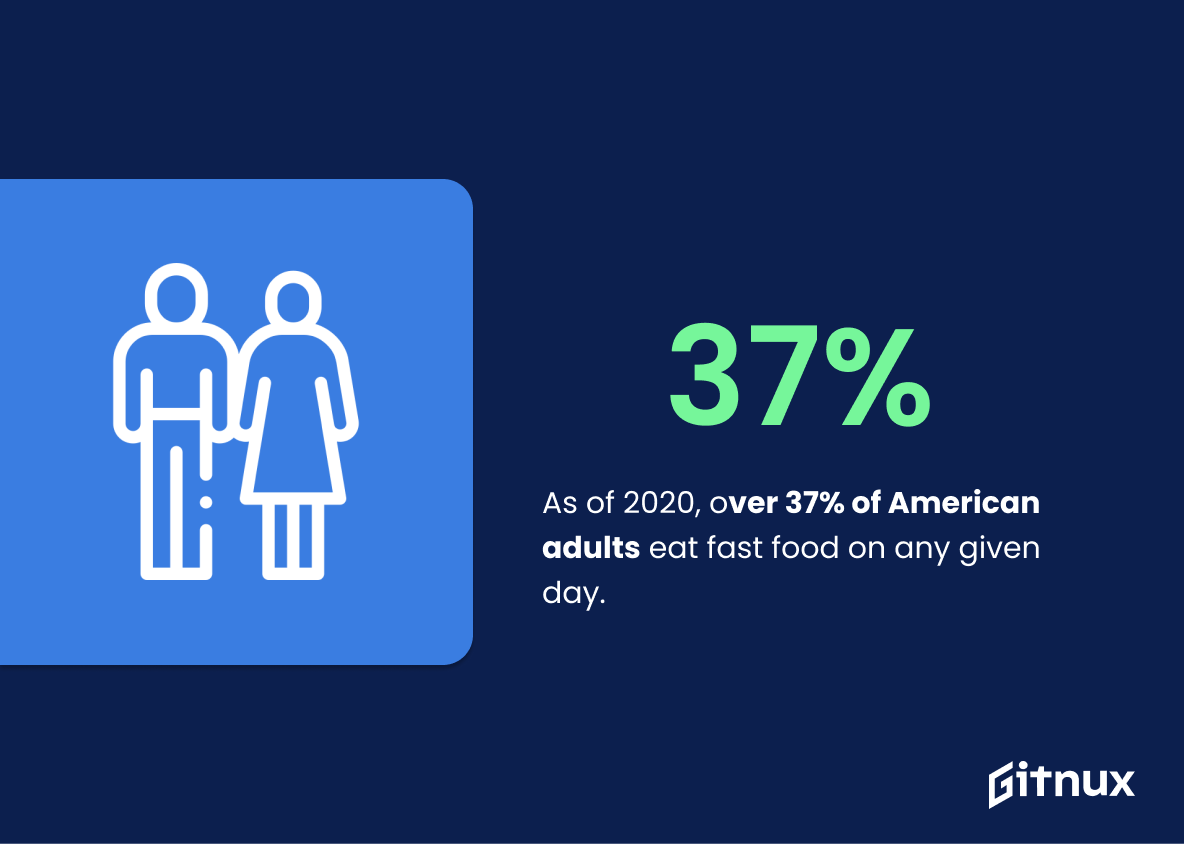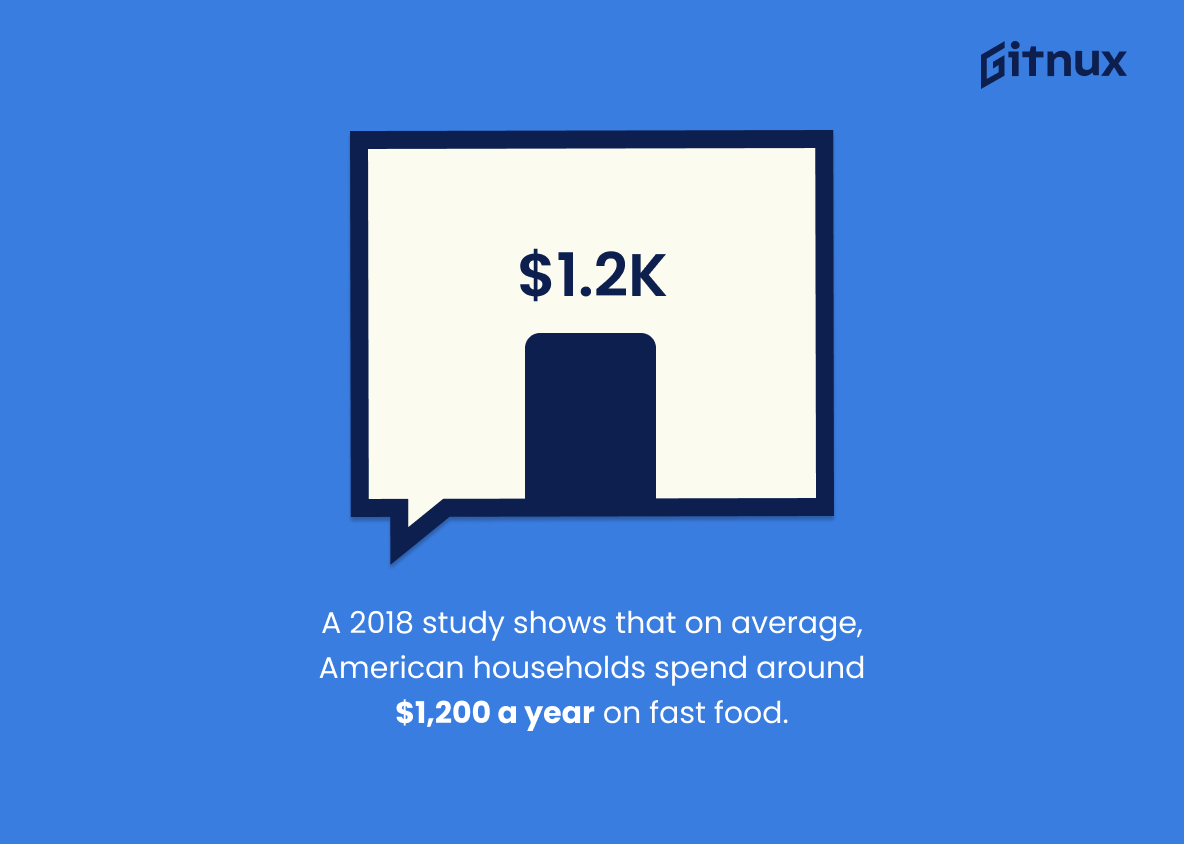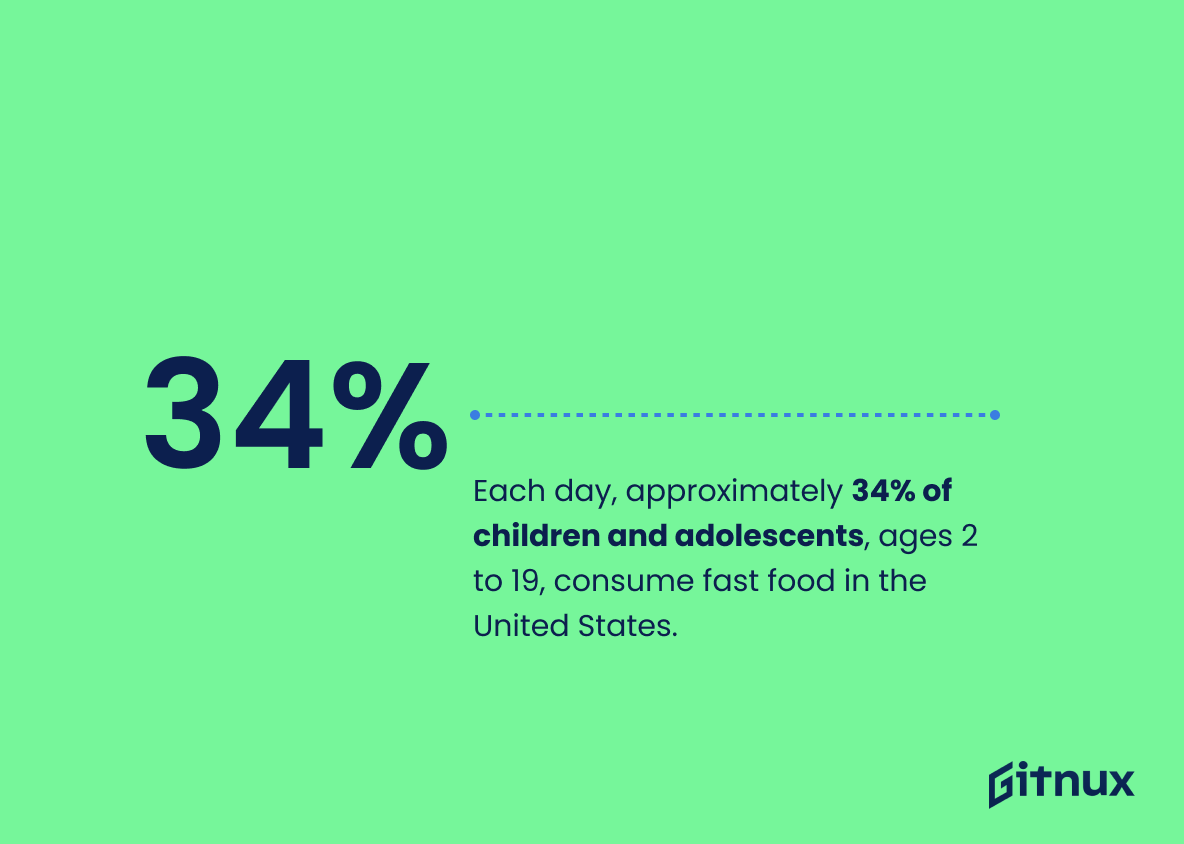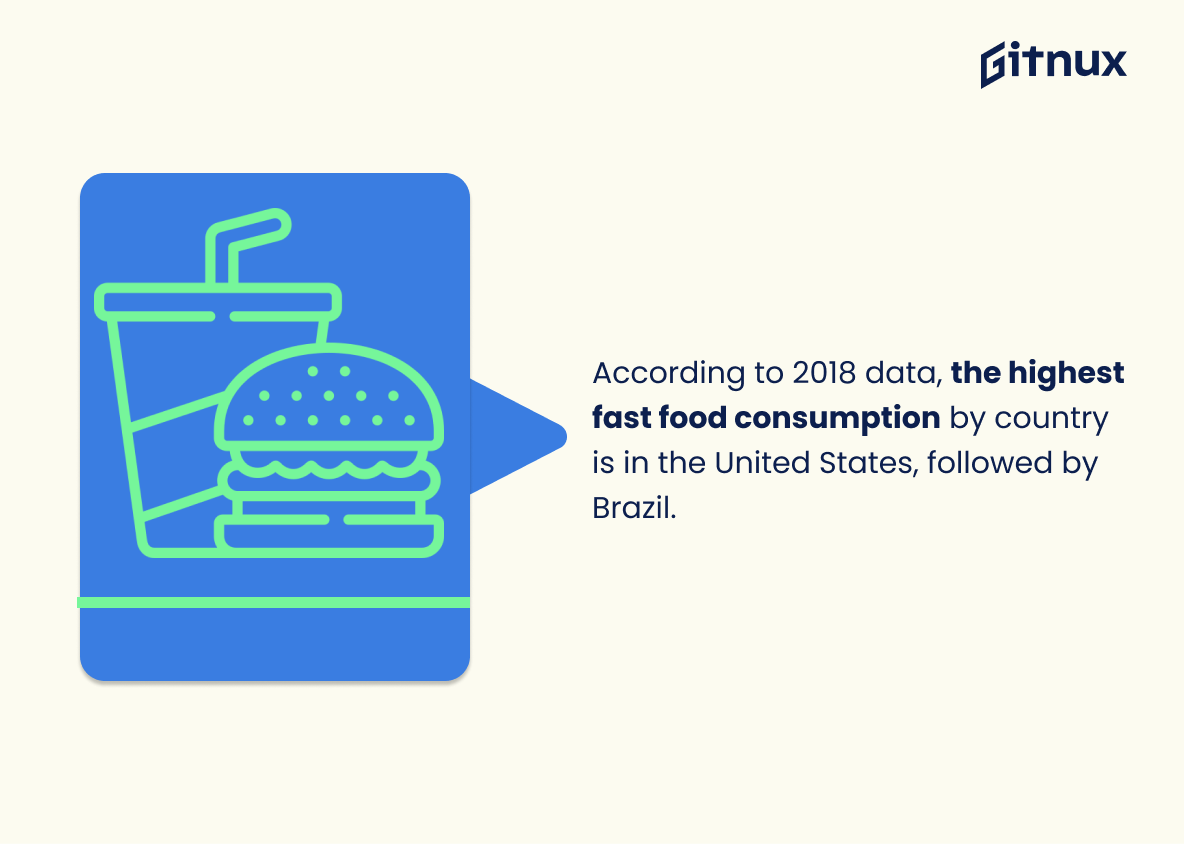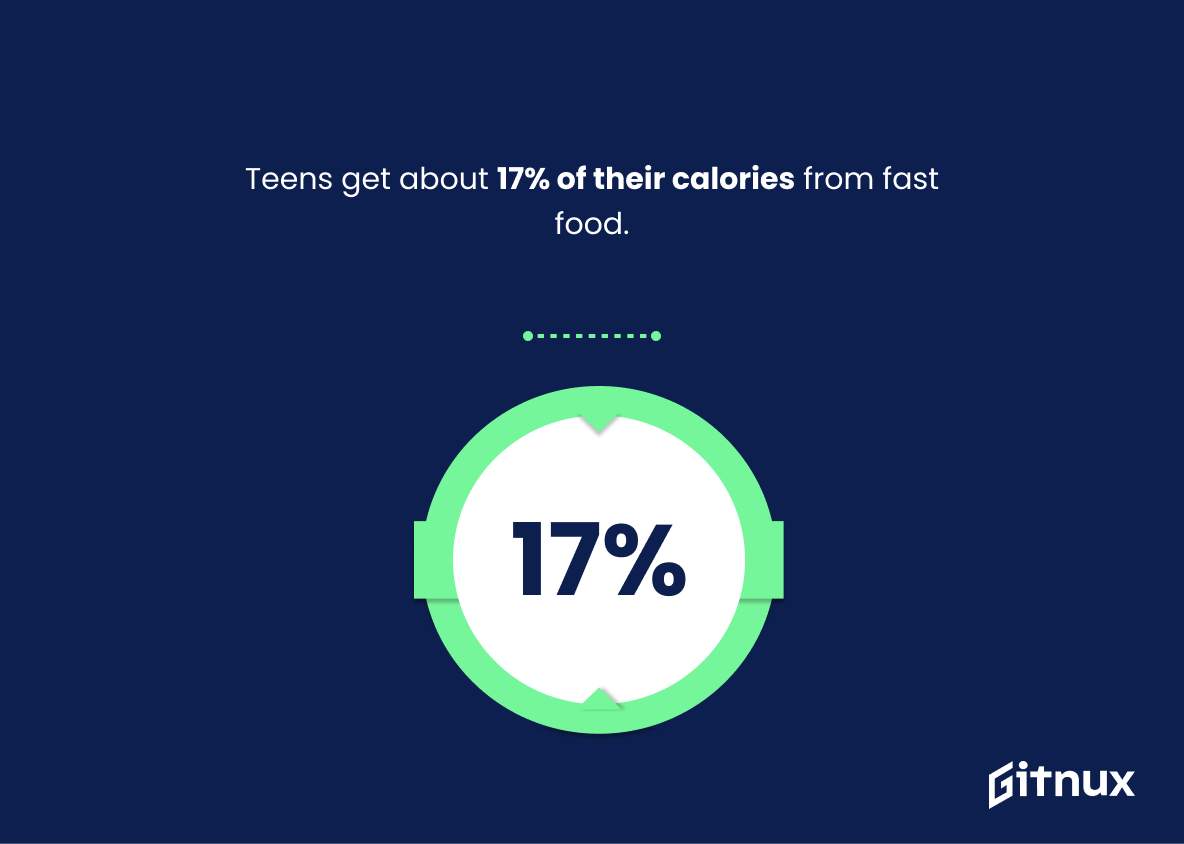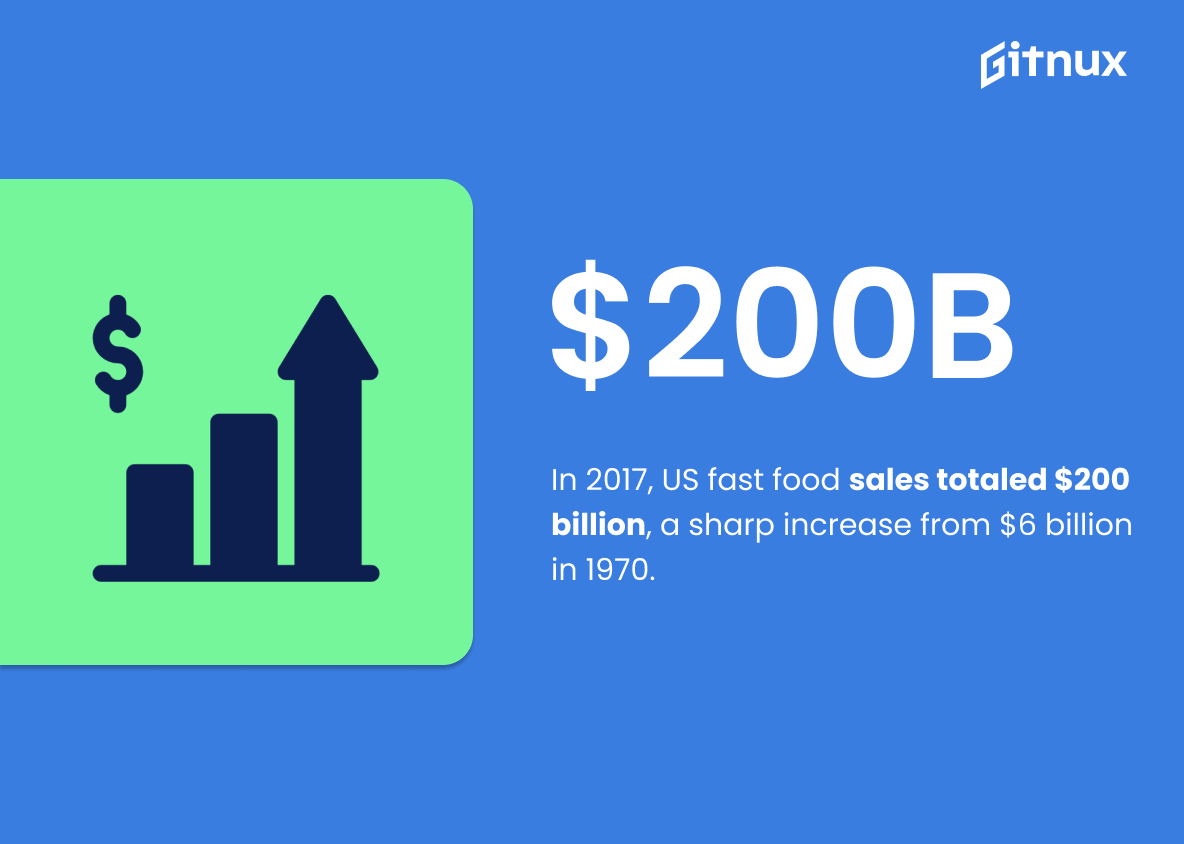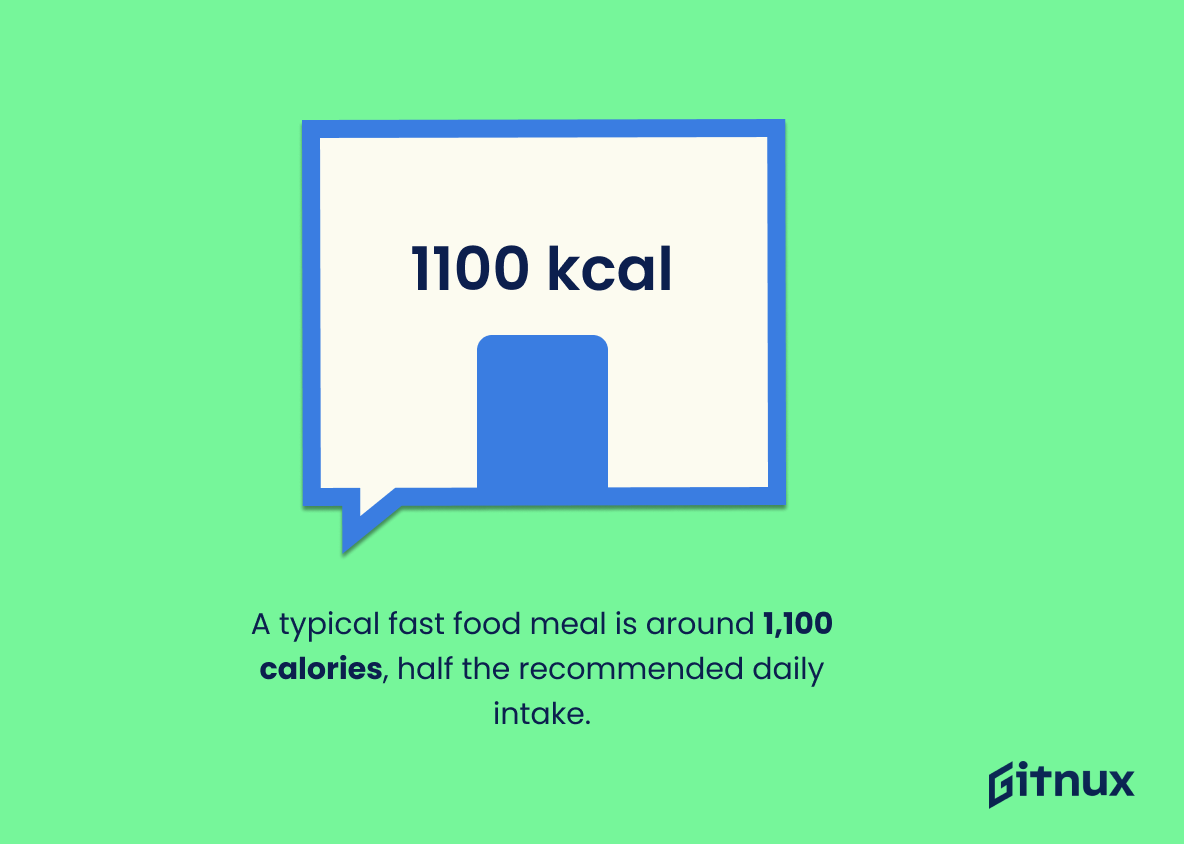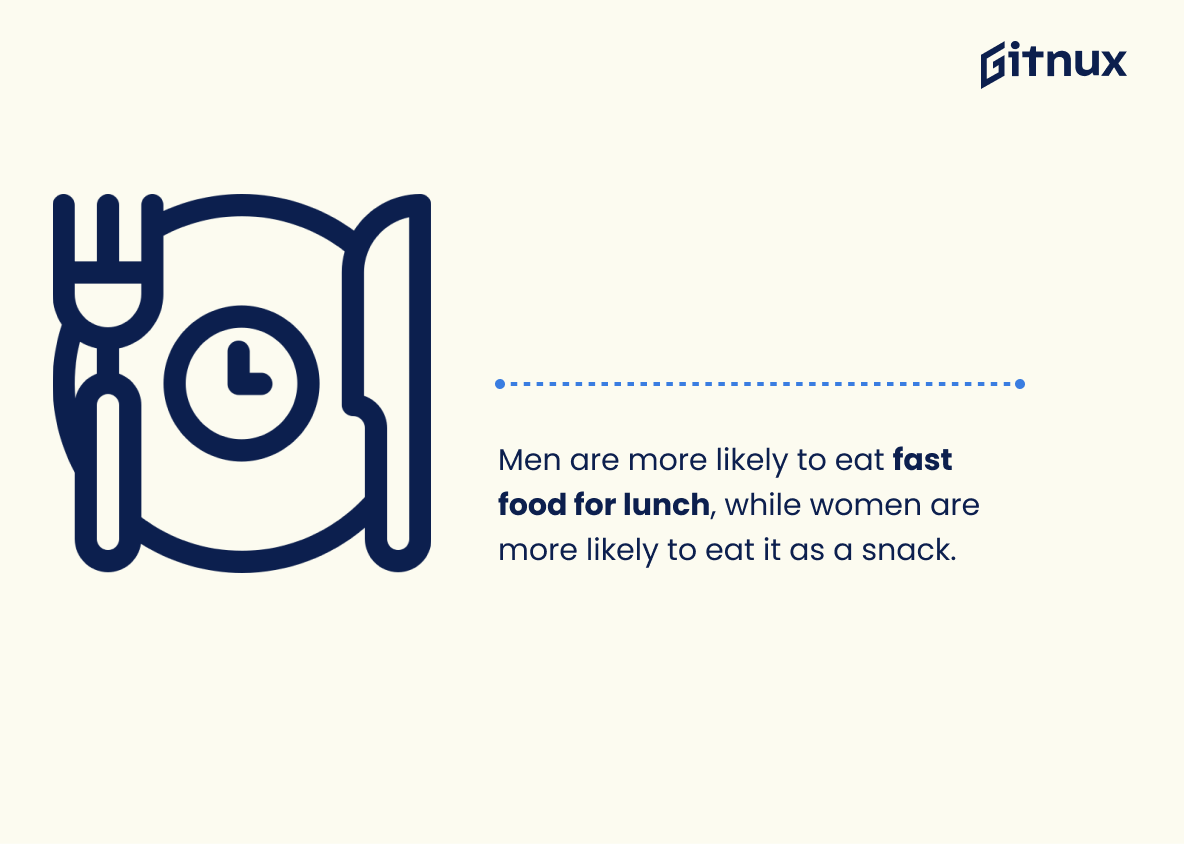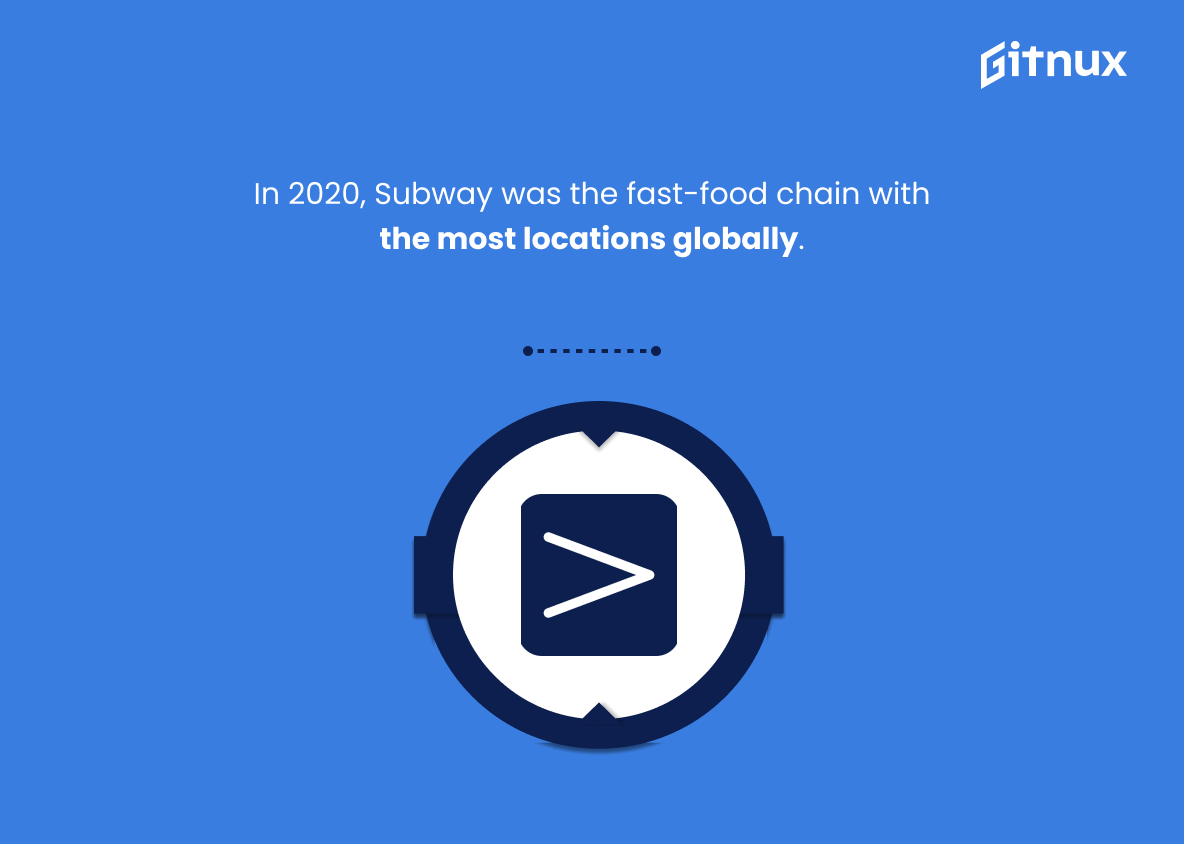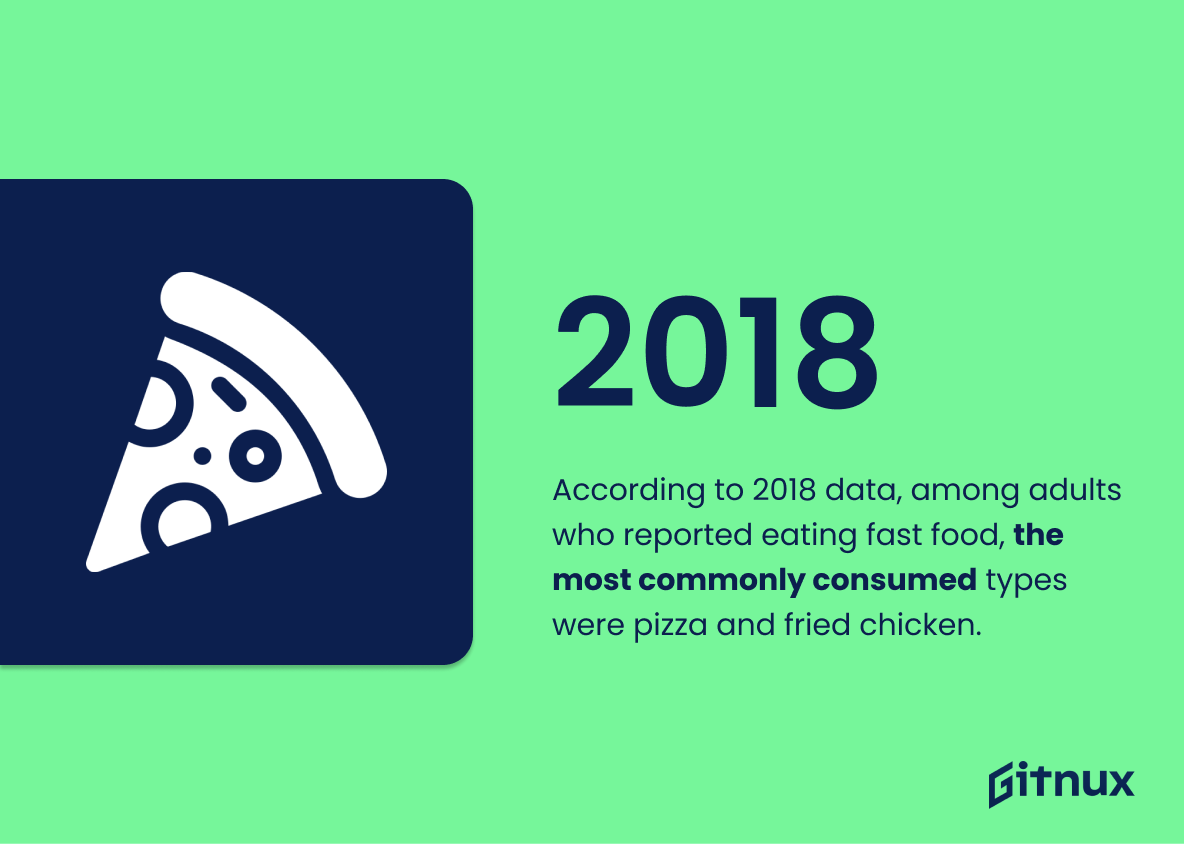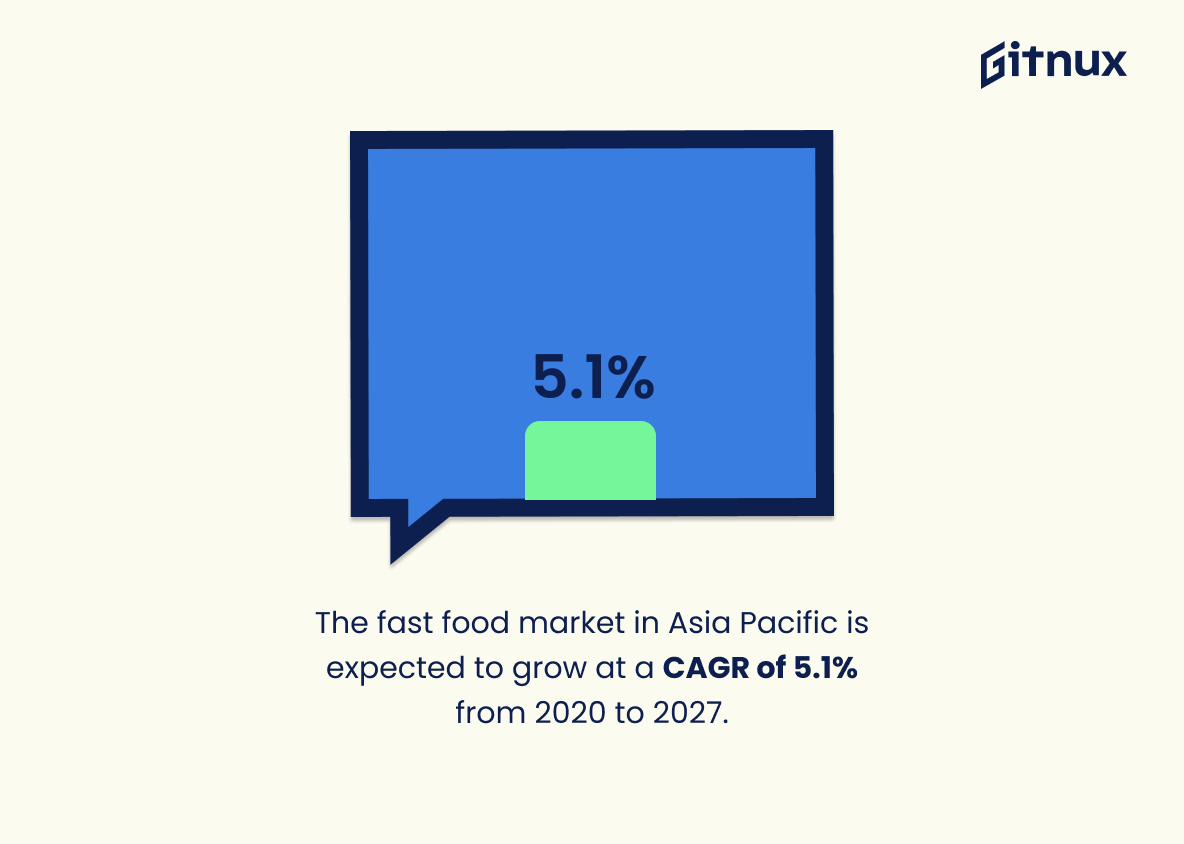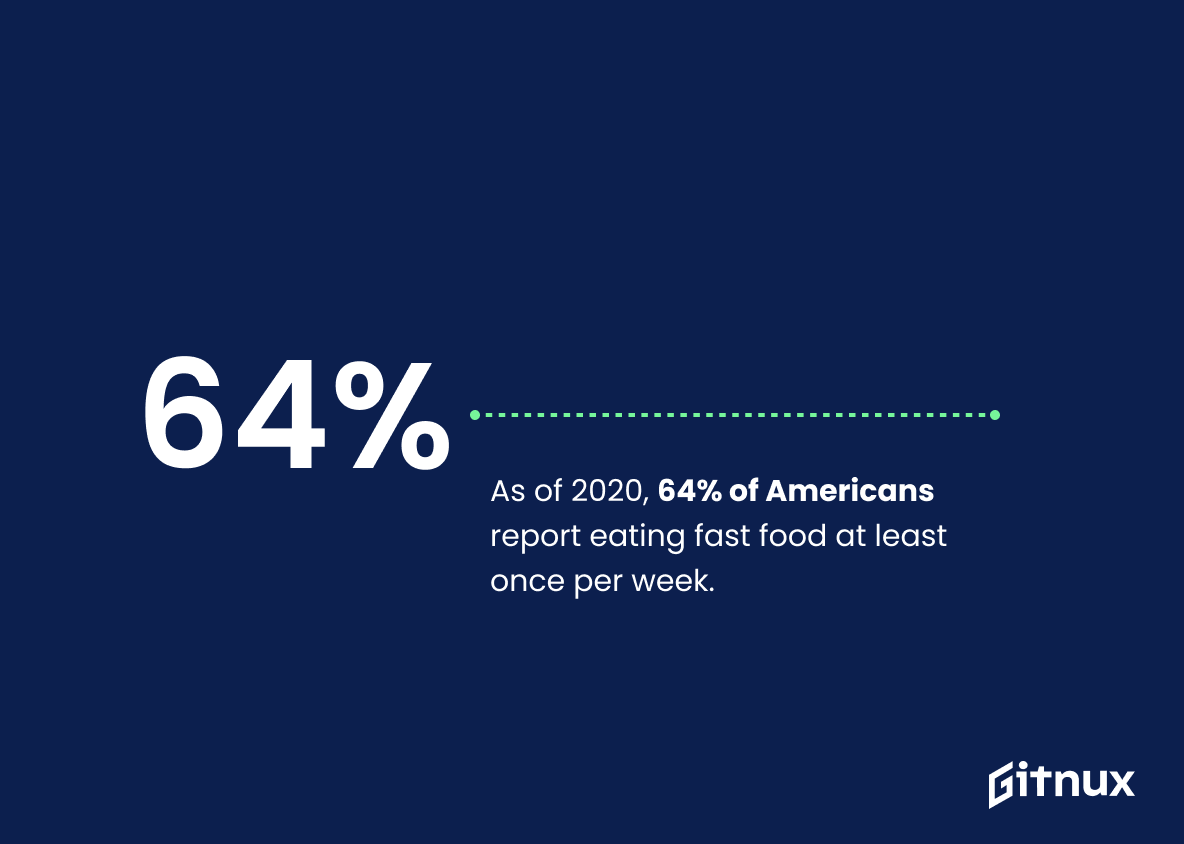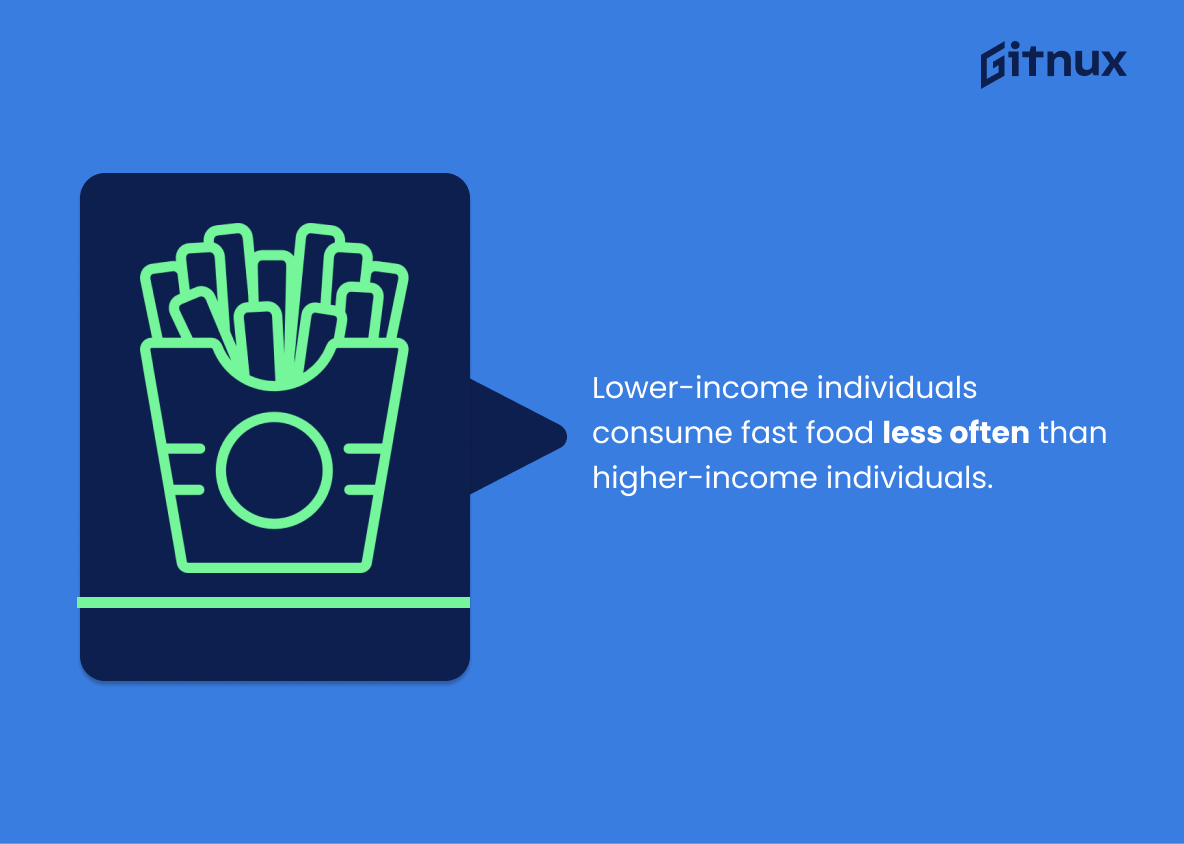Fast food – it’s quick, convenient, and often irresistibly delicious. Yet, in recent years, the consumption of these ready-to-eat meals has seen a surge worldwide, sparking a series of debates revolving around health and dietary habits.
This blog post will delve into the intricate world of fast food consumption statistics, serving up intriguing information on various aspects such as global patterns, demographic differences, and the impacts these trends have on health and lifestyle. Whether you’re a fast-food connoisseur, a health advocate, or a trend-watcher, this exploration offers a crispy, bite-sized look into the juicy details of our widespread fast-food indulgence. Stay tuned for some food for thought.
The Latest Fast Food Consumption Statistics Unveiled
As of 2020, over 37% of American adults eat fast food on any given day.
Scrutinizing this piece of information introduces an intriguing look into the dietary preferences of American adults, revealing how deeply entrenched fast food culture is within the population. Picturing it like the rhythm of a persistent heartbeat, on any given day, more than a third of American adults succumb to the allure of fast food.
This exposes a continuous cycle of fast food consumption – a staple in many American’s daily routine, reflecting both the powerful influence of fast food chains and potential public health concerns. This fact serves as a harbinger in understanding market trends, consumer behavior, possible health implications, and the potential need for intervention strategies in the fast-food industry.
A 2018 study shows that on average, American households spend around $1,200 a year on fast food.
Woven into the fabric of the blog post on Fast Food Consumption Statistics, the 2018 study disclosing the staggering average annual expenditure of $1,200 by American households on fast food serves as a spotlight. It blazingly illuminates the depth of our collective immersion in fast food culture, and provides a numerical anchor to the narrative.
This figure compellingly underlines the economic scale and significance of the fast food industry in America, an essential context for understanding the larger ramifications on health, economy, and culture. Furthermore, readers can personally contextualize and compare their own consumption patterns within this national average, potentially promoting more mindful eating habits. The statistic, in essence, paints a landscape of the American dining ethos on the canvas of data and numbers.
Each day, approximately 34% of children and adolescents, ages 2 to 19, consume fast food in the United States.
The spotlight that illuminates the landscape of fast food consumption in the United States shines predominantly on a stunning figure: 34% of children and adolescents, ages 2 to 19, are daily diving into the fast food culture. These young imbibers of quick cuisine are the upcoming generations, the future custodians of their own health and that of the nation. Their dietary choices create an undercurrent that ebbs and flows into the sea of public health, socioeconomic implications, and population habits.
The ripple effect of their currently high fast food consumption could manifest in the form of increased obesity rates, higher healthcare costs, and broader societal implications over time. A discussion on fast food consumption statistics would be incomplete without acknowledging this potent piece of the puzzle: our nation’s youth and their embrace of the rapidly served cuisine.
According to 2018 data, the highest fast food consumption by country is in the United States, followed by Brazil.
Casting light on the global panorama of fast food consumption, this striking 2018 statistic prominently features the United States leading the fast food consumption league, with Brazil hot on its heels. This nugget of data serves as a significant player in a blog post discussing Fast Food Consumption Statistics.
It paints an intriguing picture – illuminating the extent of the fast food industry’s market penetration, cultural influence, and its potential implications on societal health. Furthermore, by highlighting the second-largest market, Brazil, it invites readers to consider the growth and impact of this industry beyond the borders of its birthplace.
Teens get about 17% of their calories from fast food.
Unpacking the statistic that ‘Teens obtain about 17% of their caloric intake from fast food’, shines a spotlight on the deep-rooted connection between youth culture and the fast food industry. It helps illustrate the eating patterns of today’s young adults, highlighting the significant influence fast food has on their daily nutritional profiles.
Peeling layers further, it serves as a starting point for an intricate dialog about the health implications concerning dietary habits during adolescence. Inferring from this statistic, we might suggest an elevated risk of chronic health conditions, such as obesity, diabetes, or heart disease in later life, thereby underlining the urgency of raising nutritional awareness among this demographic.
In the context of a blog post about fast food consumption statistics, such a startling figure can certainly add weight, encouraging readers to critically evaluate the impact of fast food on our lives, our health, and perhaps more poignantly, on our future generations.
In 2017, US fast food sales totaled $200 billion, a sharp increase from $6 billion in 1970.
Highlighting the staggering escalation from $6 billion in 1970 to $200 billion in 2017 demonstrates the exponential growth fast food industry in the United States has witnessed over the years. Such a galloping leap not only underlines the changing eating habits of Americans, but also shapes the narrative of the fast food culture that is strongly ingrained in the society today.
This illuminating fact becomes a pivotal point of discussion in a blog about Fast Food Consumption Statistics, adding depth and providing significant shreds of evidence to accentuate the undeniable reality of America’s growing love affair with fast food.
A typical fast food meal is around 1,100 calories, half the recommended daily intake.
This captivating nugget of information underscores an astonishing reality when discussing dietary intake – a typical fast food meal is already clocking in at 1,100 calories. Functioning as the proverbial elephant in the room, this statistic draws a direct line between regular fast food indulgence and potential health issues. After all, with just one tango with fast food, we are unwittingly devouring half of the recommended daily calorie intake.
It provides a stark reminder to the readers of the invisible thread tying our dietary habits to our health, hence justifying the need for mindful eating. In the discussion about Fast Food Consumption Statistics, this punchy piece of data is a silent alarm bell, underscoring the magnitude of the fast food conundrum in our society.
Men are more likely to eat fast food for lunch, while women are more likely to eat it as a snack.
Understanding the nuances of fast food consumption patterns such as this offers advertisers, food companies, and health organizations valuable insights. If men are more prone to grab a quick bite at lunch and women tend to lean towards fast food as a snack, it shapes marketing strategies and product development for fast food joints. For instance, they might offer more hearty, filling options during lunch hours aimed at men, while reserving lighter, snack-style items for non-meal times to attract women.
Furthermore, it affords health organizations with a distinct perspective in designing interventions, emphasizing healthier lunch choices among men, and promoting balanced snack options amongst women. Therefore, this statistic presents a powerful tool that can drive both commercial tactics and health initiatives.
According to studies, African American adults have the highest fast-food intake, followed by Caucasians and Hispanics.
Highlighting this statistic in a blog post about Fast Food Consumption Statistics offers valuable insight into the demographic patterns of fast food consumption. It brings to center the ethnic disparities that exist in dietary habits and serves as a basis for a comprehensive discussion about the possible socio-economic, cultural, and geographical factors driving these habits.
It emphasizes the need for targeted public health endeavors to address race-specific nutritional challenges and lessens the disparities. Not to mention, it also sheds light on marketing strategies employed by fast food chains that might impact certain demographics more than others. This data serves as an essential piece of the puzzle towards understanding the bigger picture of fast food consumption patterns in the U.S.
In 2020, Subway was the fast-food chain with the most locations globally.
Shining a spotlight on the global preponderance of Subway, the statistic reveals the fast-food chain as the reigning monarch in the vast culinary kingdom of 2020. This omnipresence shapes eating habits and food choices across varied cultures and geographies.
The global scale of Subway’s operations indicates an immense customer base, pointing to widespread fast-food consumption. So, whether you’re sitting in a bustling city or a sleepy town, chances are you’re never too far from your next Subway sandwich, underscoring the astonishing ubiquity and influence of fast food in our modern daily diets.
According to 2018 data, among adults who reported eating fast food, the most commonly consumed types were pizza and fried chicken.
Unraveling the fascination of fast food lovers, these intriguing 2018 observations underscore pizza and fried chicken as the fast food royalty, reigning supreme over their culinary counterparts. In a blog post dissecting Fast Food Consumption Statistics, this juicy fact serves as an illuminating beam, shedding light on consumer preferences and trends. It helps us chew over the dominance of certain fast food types, providing a palate for understanding shifts and movements in this fast-paced industry.
With this statistic in hand, readers stand on a more informed ground, whether for the sake of health consciousness, market research or simply quenching a curiosity. So, as you delve further into the love affair between society and fast food, remember, every bite of data counts.
The fast food market in Asia Pacific is expected to grow at a CAGR of 5.1% from 2020 to 2027.
Projecting the effervescent growth of Asia Pacific’s fast food market with an estimated CAGR of 5.1% from 2020 to 2027, weaves an interesting narrative of cultural shifts and changing dietary patterns for a blog post on Fast Food Consumption Statistics. It reveals the increasing prominence of fast food in this region, hinting at both, an increased acceptance of Westernized food habits and a burgeoning consumer base largely driven by globalization and urbanization.
This significant upward trend not only paints a vibrant picture of the future landscape of the fast food industry, but it also underscores potential investment opportunities and critical challenges that lay ahead. It serves as a crucial thermometer, gauging the heated growth of this market, drawing the readers’ attention to its unignorable significance in the global foodscape.
As of 2020, 64% of Americans report eating fast food at least once per week.
In the kaleidoscope of food culture, the statistic that as of 2020, 64% of Americans report eating fast food at least once per week paints an intriguing portrait of American dining habits. It spotlights an undeniable reality of our modern lives, underlining the ubiquity and allure of fast food in the U.S. With nearly two-thirds of Americans frequenting fast food joints weekly, it underscores not just a culinary choice, but a societal trend shaping the nation’s health, economy, and environmental impact.
This figure, an essential ingredient in our recipe of understanding, provides tangibility to abstract concepts, framing the extent of fast food’s enmeshment in American culture for the post about Fast Food Consumption Statistics. Unwrapping this number, we can dish up discussions about convenience versus health, economic driving factors, or the environmental footprint that this level of fast-food consumption generates.
Lower-income individuals consume fast food less often than higher-income individuals.
Insight into the diverse nature of fast food consumption patterns, aligning with income groups, significantly enriches the narrative of this blog post. This revelation contradicts the common assumption that fast food is predominantly consumed by lower-income individuals due to its affordable prices and availability. This illustrates the power of statistics in breaking stereotypes and providing an accurate representation of realities.
Upon understanding this dynamic, addressing underlying reasons and implications becomes possible – such as the influence of lifestyle, marketing initiatives targeted at different income groups, or even the accessibility and distribution of fast food chains. This analysis could be pivotal in shaping policies or business strategies, which makes this statistic a crucial piece of the puzzle.
Roughly 70% of fast food sales in the US happen at drive-throughs.
In the bustling realm of fast food, the convenience factor is unmistakable. Imagine this – almost three-quarters of all fast food transactions in the U.S. occur at drive-throughs. This intriguing revelation underscores the fundamental characteristics that make fast food so appealing. It’s quick, it’s easy, and most importantly, it’s accessible.
As consumers, we’re drawn to simplicity and this striking statistic showcases just how integral drive-through services have become in meeting our perpetual penchant for convenience. In a broader discussion on Fast Food Consumption Statistics, this data point provides vital insight into our habits and preferences, emphasizing the undeniable influence that drive-throughs have on the fast food industry’s continued success.
By 2023, the global fast food market is expected to reach approximately 690.80 billion USD.
Projected to skyrocket to an astonishing value of 690.80 billion USD by 2023, the global fast food market paints a vibrant portrait of the escalating trend of fast food consumption. This compelling data point, looming large in a blog post emphasizing Fast Food Consumption Statistics, not only mirrors the burgeoning popularity of fast food culture worldwide, but also delineates the far-reaching implications it could have on global economic dynamics.
The increase in market value implies a swell in consumer preference for fast food, possibly stemming from busier lifestyles that favor convenience, and global expansion of major fast food chains. Hence, the blog post stitched together with this impactful forecast beckons to potential investors eyeing prolific avenues and aids policymakers and health experts to foresee and address nutritional concerns that might rise as a consequence of increased fast food consumption. Therefore, by incorporating this powerful prediction, the blog post becomes a flavorful brew of commercial prospects, consumer trends, and public health repercussions.
In 2017, the average American fast food meal contained 767 calories.
Within the landscape of Fast Food Consumption statistics, the data point regarding the average American fast food meal containing 767 calories in 2017 serves as a compelling prologue. It offers a panoramic view of the caloric density of meals consumed in fast-food chains, becoming a powerful mirror to our dietary habits.
This information provides a tangible reference to the scale of nutritional challenges associated with fast food and invites readers to grapple with their own consumption realities. Ultimately, it casts a bright spotlight on the intersection of fast food and health issues, stirring dialogue and fostering awareness.
Among workers aged 20 and older, consumption of fast food decreases with age.
The gem within the raw data ‘ Among workers aged 20 and older, consumption of fast food decreases with age ‘ serves as an important piece in the culinary jigsaw puzzle about fast food consumption statistics. Not only does it shed light on the correlation between age and fast food intake, but it also adds a nuanced layer to our understanding of eating habits in different age demographics.
When discussing fast food trends and influences, this noteworthy detail plays a pivotal role, allowing us to identify and explore shifts in eating behaviors over lifetimes. This exploration is instrumental to the larger conversation on the fast-food industry’s consumer targets, marketing strategies, and their potential alterations in response to aging population’s changing dietary habits.
In 2017 it was estimated that global fast food industry sales reached over 570 billion U.S. dollars.
Quenching our appetite for knowledge as well as for fries, the figures showing the staggering amount of over 570 billion U.S. dollars in sales for the global fast food industry in 2017 serve a meaty point of discussion. These numbers cook up a vivid picture of the breath-taking scale of fast food consumption worldwide.
In the blogging realm of Fast Food Consumption Statistics, this figure isn’t just a side dish, it’s the main course. From the public’s enthusiasm for burgers and chips to the economic ramifications in industries such as farming, manufacturing, and advertising, this juicy morsel vividly illustrates the expansive impact and essentially carnivorous appetite the world has for fast food.
Data from a 2019 report shows that 42.8% of all fast food ordered was for takeout, while 30.5% was for drive-through.
Delving into the arena of fast food consumption, it’s intriguing to perceive how patterns form through numbers. The 2019 report indicating 42.8% of all fast food ordered was for takeout, alongside the 30.5% for drive-through, serves as a testament to the modern lifestyle – punctuated by allure for convenience. Highlighting this transformation, these percentages underline the evolving preference of customers.
From sit-down meals, a significant chunk has pivoted towards takeaway options, expressing the pace at which we live today. This snapshot of consumer behavior also provides insight for fast food corporations, indicating potential avenues for investment. Essentially, these figures render a rich tapestry revealing the dynamics of fast food culture and consumption.
Conclusion
Analyzing the fast food consumption statistics reveals a clear picture of how integral the fast food industry has become in our modern lifestyle. The convenience, variety, and marketing efforts of fast food chains have contributed to their widespread popularity. However, recognizing the potential health risks associated with frequent fast food consumption is imperative.
As a society, increased awareness should inspire us to make healthier choices, regulate consumption, and consider more nutritious alternatives. Nonetheless, it’s clear that the fast food industry plays a significant role in our global economy and our day-to-day lives. Actions towards healthier options within this industry could generate substantial benefits for public health, reflecting the power consumers hold in shaping the future of fast food.
References
0. – https://www.civicscience.com
1. – https://www.www.statista.com
2. – https://www.www.fool.com
3. – https://www.www.restaurant.org
4. – https://www.www.webstaurantstore.com
5. – https://www.www.heart.org
6. – https://www.www.cdc.gov
7. – https://www.www.qsrmagazine.com
8. – https://www.academic.oup.com
9. – https://www.www.grandviewresearch.com
10. – https://www.www.ncbi.nlm.nih.gov
11. – https://www.www.zionmarketresearch.com
